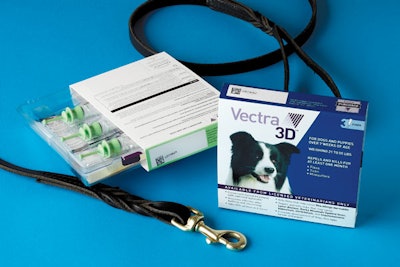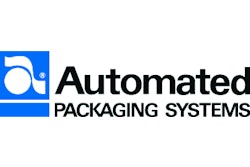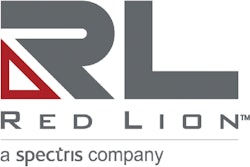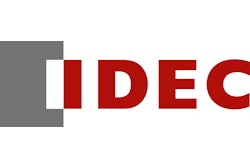
Viable track-and-trace solutions aimed at ensuring product authentication are beginning to emerge. Two notable examples, at Summit VetPharm and at Biogen/Catalent, rely on 2D bar-code technology. Meanwhile, an RFID approach at ASD Healthcare provides not only authentication but a Web-enabled Vendor Managed Inventory solution, as well.
The implementation at Summit VetPharm, a subsidiary of Sumitomo founded in 2006 and based in Ft. Lee, NJ, goes by the name of Bloodhound. In commercial use since September of last year, it’s designed primarily as a means of detecting when Summit’s Vectra 3D flea and tick prevention products are being sold outside of authorized channels. These products are contractually designated as being for sale exclusively by vets directly to their clients. By February 4, the Bloodhound technology had clearly identified two instances where Summit’s Vectra 3D product had been found on the Web sites of Internet pharmacies.
“I am very disappointed that individuals have willfully violated our anti-diversion contract and placed our product outside the veterinary channel for sale,” says Julia Stephanus, president and CEO of Summit VetPharm. “Vectra 3D and all Summit VetPharm products are exclusively dispensed by licensed veterinarians. We will not tolerate product diversion because it undermines the relationship between veterinarians and pet owners and raises questions about product integrity.”
“Vets are highly concerned by product diversion of flea and tick as well as other animal health products,” says Albert Ahn, senior director of veterinary services at Summit. “We will fully enforce our anti-diversion policy. One of the core principles upon which our company was founded was the commitment to ensure that our products are developed and made available exclusively through licensed vets. By securing our supply chain, we are able to protect the veterinary professional, maintain authenticity of our products, and enhance the role of veterinarians in the lives of the animals they treat.”
Stephanus makes it clear just how central a role is played by the Bloodhound track-and-trace technology: “Through our Bloodhound Technology and our legally-binding anti-diversion agreement, which must be signed by the owner of the veterinarian practice prior to a purchase of Vectra 3D, we can keep companion animal health exactly where it belongs—in the hands of professionals. Veterinarian response to the Summit VetPharm anti-diversion policy and the proprietary Bloodhound technology has been overwhelmingly positive.”
What is it?
So what is Bloodhound Technology, how is it implemented throughout the packaging and distribution chain, and who are the key technology and service providers in this implementation? In a recent phone interview, Ahn was pretty forthcoming about all of the above—except the identity of the firm that contract manufactures and packages Vectra 3D for Summit VetPharm. That firm, he notes, is in the U.S. and is a “reputable GMP manufacturer.”
Turnkey responsibility for the project, including all Information Technology, software, and hardware, was in the hands of Nutec Systems (www.nutecsystems.com). Nutec worked with a Summit IT consultant that created the data repository that resides at Summit’s New Jersey headquarters. Nutec also brought the system integration capabilities that permit data to flow from all points in the supply chain to the data repository. Here’s how it all works.
Primary containers are aluminum tubes holding anywhere from 0.8 to 8.0 mL of viscous liquid medication used on cats and dogs to rid them of ticks and fleas. These tubes are placed in polyvinyl chloride clamshells and the clamshells are placed in a paperboard sleeve.
Prior to the sequence described above, the paperboard sleeves, stacked as flat blanks, are fed from a magazine through a dual-head printer supplied by Nutec Systems and made by APS (www.aps-direct.de). The print heads are digital thermal ink-jet printers from HP (www.hp.com). One head applies a unique covert code that can only be seen by a Summit agent using a covert-capable reading system. The other print head applies the same unique code, but it’s done overtly in black ink against the white paperboard.
“Printing of large groups of sleeves can be done quickly and efficiently and then applied to clamshells when needed,” says Nutec’s Mike Shaw. “All that matters is that each sleeve has a unique ID.”
Operators place 12 sleeved clamshells in a paperboard case. The case is then conveyed past a DataMan vision system from Cognex (www.cognex.com). It reads each of the 12 unique codes on the paperboard sleeves and sends those codes to a PC so that the Nutec system can generate a unique case code. The case is then conveyed to the case print and inspection station, where the unique case code is printed (again by an APS digital thermal ink-jet system) and verified by another Cognex vision system. This Cognex system also sends the newly printed case code to the Nutec PC. There a child/parent relationship is created, because data in the unique case code represents all 12 codes on the paperboard sleeves. The parent/child file is written to the PC hard drive for later retrieval by the contract packager’s site server. At Summit’s headquarters in New Jersey, the data repository logs onto this server on a regularly scheduled basis.
Next in the supply chain sequence is shipment of cases to a distributor. It’s the distributor that ships to veterinarian clinics, and shipments are always by the case so that the parent/child relationship remains intact.
When the distributor gets an order from a veterinarian clinic, as the order gets processed and shipped, the distributor associates that clinic’s purchase order with the unique code on the case and, by virtue of the parent/child relationship, with each sleeved clamshell.
“The whole idea is that Summit knows the unique numbers that are for each case and each unit in that case,” says Shaw. “They also know which cases are going to which clinics. Summit then monitors the gray market, chiefly Internet sites, and if they see Vectra for sale they acquire it.” All that’s left is a scan of the code to see who the naughty vet is.
Ahn says RFID was explored as a track-and-trace possibility, but a solution based on 2D bar-code technology was viewed as more affordable and more easily implemented. “We continue to follow RFID with great interest,” he adds. “In the meantime, we view our current implementation as cutting edge technology and a development that is good for the entire animal health industry. We’re thrilled to be in the vanguard. It’s part of good product stewardship.”
Ironically, what Summit VetPharm has implemented is a system that is California e-Pedigree ready—even though, as a maker of animal health products rather than drugs used by humans, Summit is under no obligation to do so. It’s safe to bet that any number of drug manufacturers who are obligated to meet the California requirements would like to have the kind of track-and-trace capabilities that Summit VetPharm has.
Nutec’s Shaw says he’s seeing considerable interest in a solution like Summit’s among drug manufacturers that aren’t as large as and don’t have the resources of a Pfizer or a Merck. “Those large drug manufacturers have their own unique ID generating capabilities in-house,” says Shaw. “They download unique codes straight to the printer on their packaging line. But smaller firms can’t invest that kind of money in an in-house capability. They’re looking for unique serialized codes from an outside source.”
Drugs for humans
Moving now to a track-and-trace implementation that was recently announced and is on the way to commercialization, we come to Catalent and Biogen Idec. Based in Cambridge, MA, Biogen is a maker of drugs to treat patients with multiple sclerosis, Crohn’s disease, non-Hodgkin’s lymphoma, and rheumatoid arthritis. In this particular track-and-trace solution, the biologic products are first shipped in sterile, glass vials from Biogen to Catalent’s Red Lion Road Facility in Philadelphia. At Catalent, the vials are labeled and placed into cartons before a serialized 2D bar code is applied. The cartons are then case-packed, palletized, and shipped to third-party logistics (3PL) providers.
Secure Symbology, Inc. (www.securesymbology.com) is the technology provider on what might be called the front end of this implementation. SSI developed the software that generates and manages the unique identification numbers. “We defined user and performance requirements for the systems supplied by SSI,” says Akan Oton, global marketing director at Catalent.
“It all comes down to data base management,” Oton continues. “SSI gives us a way to manage and store large amounts of data and also provides the security apparatus that protects everything being stored and managed. They also push the unique ID numbers out to our packaging line.”
SSI developed the 2D bar-code printing equipment slated for the Catalent packaging line, working with a network of providers, including the equipment integrator HyPex (www.hypex.com) and utilizing digital thermal ink-jet printing equipment from HP.
With SSI established as the front end of this track-and-trace solution, Biogen then designated a third-party provider to handle the actual transmission of the e-Pedigree.
“At some point in the future, if a drug is to be sold in California, there must be an electronic record of each unit sold to a distributor,” says Oton. “This electronic record must go to all partners in the supply chain. SSI starts that record by generating a unique ID and transmitting it out to the carton printer in the Catalent facility. As cartons are case packed and cases are palletized, parent/child relationships are established, and these relationships are also captured in 2D codes that are ink-jet printed on cases and pallet labels.
“Here’s where the third-party provider handling the actual transmission of the e-Pedigree enters the picture. This provider receives those serialized, unique numbers from SSI formatted in a manner that allows Biogen’s trading partners to receive it and marry it with transaction information. It can get complicated at this point. Distributors, 3PLs, and other trading partners may use e-Pedigree providers that are different from the one Biogen has selected. Another complication is that pallets are likely to be broken down and relationships that have been established at the packager may change. A pallet leaving Catalent and arriving at a distributor or a 3PL may be broken down and its contents re-aggregated. If that happens, there needs to be some tracking to reflect that re-aggregation, and it’s the responsibility of each subsequent handler in the chain to effect that tracking. This new aggregation information also has to be sent back to SSI’s data management system.”
Complicated as it may be, at the end of the day the only thing that matters is that the all-important goal of authentication has been achieved. As each trading partner receives the e-Pedigree, electronic signatures are required, along with the full history of the product’s movement. What’s different about the impending California requirements is that for the first time, the manufacturer is responsible for certifying that they are shipping what they say they are, right down to each individual unit.
“Patient safety is of paramount importance to us and this is one more step we can take to help increase the safety of our products,” says Robert A. Hamm, Biogen Idec’s executive vice president, pharmaceutical operations & technology. “In addition to meeting California requirements, 2D bar-code technology will prepare us for other states and countries enacting similar laws.”
Smart refrigerators
Along with Catalent and McKesson, Amerisource Bergen is one of the three pharmaceutical product distributors through which the vast majority of drugs in this country are channeled. ASD Healthcare, a specialty division of Amerisource Bergen that is based in Frisco, TX, is putting RFID technology to especially good use with a system called Cubixx, a Vendor Managed Inventory model that relies on a network of “smart refrigerators.”
The injectible drugs involved here fall into the category of “life savers,” and they can cost $1,000 per dose. They come from any number of drug manufacturers, but once they arrive at ASD’s distribution center in Brooks, KY, ASD owns title to them. Here’s how ASD handles them from that point on.
When an order from a hospital pharmacy comes into the Brooks distribution center, ASD prepares it for shipment by attaching to the folding carton an RFID tag. Supplied by RF Code (www.rfcode.com), the tag has a unique serialized code number. Clear shrink wrap is used to affix the RFID tag to the carton.
“We associate the product with the unique number, and that association is stored in our data base,” says Chad Herron, manager of business development at ASD.
At the hospital pharmacy, the drugs make their way to a refrigerator that can range anywhere from 5 to 55 cu ft. In the refrigerator is an RFID scanner, also supplied by RF Code. It records each time a carton is removed and triggers an automatic invoice.
“It’s a way of letting customers keep an adequate supply of life-saving drugs on site in the hospital pharmacy or E.R.,” says Herron. “But they don’t pay for product until it’s removed from the refrigerator.”
The removal of the carton and consequent scan of the bar code not only bills the hospital pharmacy, it also notifies ASD that one more carton of a given product has been administered to a patient. When the hospital pharmacy’s inventory falls below pre-set levels, Cubixx automatically contacts ASD to order overnight delivery of new inventory.
A key vendor in the Cubixx system is Blue Vector (www.bluevector.com), which makes what is called a “network appliance.”
“It pulls data supplied by the RFID scanner and sends it to a server in our Frisco, Texas headquarters,” says Herron. “The data is then routed automatically to the ASD DC in Brooks, Kentucky.” This rapid exchange of encrypted information is what makes the automatic invoice and the automatic replenishment possible.
One nice thing about this implementation, adds Herron, is that plug and play components from RF Code and Blue Vector were suitable for the most part. There was some customization, of course, where drivers and software and middleware were concerned. But the customization, which can be expensive, was kept in check.
Herron also emphasizes that while automatic replenishment and Vendor Managed Inventory are perhaps the most visible benefits of the Cubixx system, there’s a strong element of authentication in the mix, too.
“The chain-of-custody benefit is very important,” says Herron. “We now offer full pedigree to our customers. When they remove a carton from the refrigerator and that unique RFID code is read, the pedigree is published on our Web site. We get the best of both worlds: chain-of-custody authentication and automated billing and replenishment.”


























